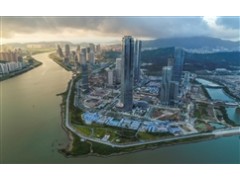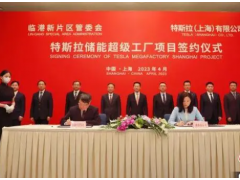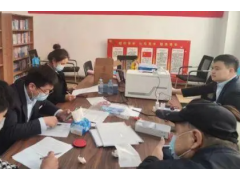On January 1, 2022, the Regional Comprehensive Economic Partnership Agreement (RCEP) will come into effect. As the free trade area with the largest population, most diverse membership structure and greatest development potential in the world today, RCEP includes 10 ASEAN countries and 5 non-ASEAN countries including China, Japan, South Korea, Australia and New Zealand, with a total population of 2.27 billion and a total GDP of The volume is 26 trillion U.S. dollars, and the total export volume is 5.2 trillion U.S. dollars, accounting for about 30% of the global total. General Secretary Xi Jinping emphasized the need for "high-level implementation of the Regional Comprehensive Economic Partnership Agreement." based on China's ultra-large-scale market, the realization of high-quality implementation of RCEP will help China unswervingly promote high-level opening up, accelerate the construction of a new development pattern with the domestic cycle as the main body, and domestic and international dual cycles that promote each other, and continuously stabilize and strengthen the industrial chain. Supply chain, better grasp the market opening opportunities brought by RCEP.
Actively promoting the RCEP process is a major measure for my country's high-level opening up
General Secretary Xi Jinping pointed out that "China will continue to expand high-level opening up to the outside world, and steadily expand institutional opening up such as rules, management, and standards." China's economic development has opened up space and added impetus to the recovery and growth of the world economy." RCEP negotiations have gone through eight years, and China has been one of the active promoters. The establishment of the RCEP Free Trade Zone marks the victory of multilateralism and free trade. It will provide great support for my country to build a new open economic system and a new development pattern, and become an important platform for China to promote high-level opening up.
RCEP is a high-quality free trade agreement, emphasizing the unity and reciprocity of economic and trade among member countries in the region. The 15 member countries have all committed to lowering tariffs, opening markets, and reducing standard barriers, which will help fully release the economic growth potential of countries in the free trade area. RCEP takes into account the national conditions of different countries to the greatest extent, and gives special and differential treatment to the least developed countries, which is conducive to promoting inclusive and balanced development within the free trade zone, so that all parties can fully share the results of RCEP and achieve a higher level of mutual benefit and win-win results . As Asia-Pacific countries, China and most members of RCEP are close geographically, have many cultural exchanges, and have similar consumer needs and preferences. The prospects for cooperation are bright. Judging from the results of the implementation of the agreement for more than half a year, the dividends are continuing to be released.
Consumers and producers in member countries have benefited significantly from the reduction of tariff barriers
RCEP member countries have committed to gradually reducing tariffs for each other, and eventually more than 90% of products will achieve zero tariffs. After RCEP took effect, the ratio of immediate zero tariffs between China and ASEAN, Australia, and New Zealand exceeded 65%, the ratios of immediate zero tariffs with South Korea reached 39% and 50%, and the ratios of immediate zero tariffs with Japan reached 25% and 57%. Consumers can directly enjoy lower-priced daily necessities imported from RCEP member countries, and producers can greatly reduce production costs and increase net profits by using lower-priced final and intermediate products, thereby increasing the profitability of enterprises in the free trade zone. productive enthusiasm. According to the data of the General Administration of Customs, within half a year after RCEP came into effect, Chinese export enterprises applied for 266,000 RCEP certificates of origin and issued a statement of origin, with a value of 97.9 billion yuan, and enjoyed tariff reductions of 710 million yuan from the importing country.
RCEP member countries are all important export destinations of China. The number of inter-industry trade and intra-industry trade between China and other RCEP member countries is very large. Not only textiles, shoes and hats, toys and furniture, chemical products and other labor-intensive and resource-intensive products have always been the main export of China's significant comparative advantage. Products, and the export of capital-intensive and technology-intensive medium and high-tech products such as electromechanical audio-visual, clock instruments, vehicles, ships and aircrafts is also growing rapidly. At the same time, China's ultra-large-scale market is extremely attractive to other RCEP member countries. China has the second largest consumer market in the world, and the middle-income group has great consumption potential. With the continuous expansion of the population size of this group and the continuous upgrading of the consumption structure, the demand for high-quality products and services from other countries is also increasing. many. Dairy products from Australia and New Zealand, automobiles, household appliances, cosmetics, clothing, and film and television dramas from Japan and South Korea, and agricultural products such as vegetables and fruits from ASEAN are all imported products that are popular among Chinese consumers.
Reducing standard barriers is conducive to promoting domestic and international dual cycles
Standard barriers are also called technical barriers or soft barriers, which refer to barriers set up in the fields of environment, sanitation, and environmental protection. In terms of reducing technical barriers, RCEP has gradually implemented unified rules in the fields of customs procedures, inspection and quarantine, and technical standards, further reducing the cost of trade cooperation. Through measures such as pre-ruling, advance declaration, and pre-shipment inspection certificate system, the customs procedures have been further simplified, the transparency of customs laws and regulations has been improved, the clearance of goods has been accelerated, and trade facilitation has been promoted. In terms of compliance and standardization, RCEP strengthens member countries' implementation of the WTO Agreement on Technical Barriers to Trade, and recognizes the understanding reached by member countries on technical regulations, standards and conformity assessment procedures.
Reducing standard barriers plays an important role in promoting the mutual export of products between China and member countries, and is conducive to facilitating the economic cycle among countries in the free trade area. Nevertheless, China still needs to have high standards and strict supervision of domestic enterprises, and constantly improve the technical standard system that is in line with international standards. For manufacturers of low- and medium-tech products, especially export-oriented small and medium-sized enterprises, the government should further unblock information dissemination channels, help enterprises track the development of international standards in real time, understand risk warnings, improve their compliance awareness and compliance capabilities, and compare imported National standards or advanced international standards, timely update product production and processing technology, produce qualified high-quality products. For core industries, the government's work focuses on strengthening risk prevention, tracking and judging the development trend of international rules in real time, strengthening research and reporting on technical standards and conformity assessment procedures for core industries and key product supply chains, timely issuing risk warnings, and unblocking information dissemination channels , Strengthen targeted compliance and risk prevention guidance for relevant industries and enterprises. At the same time, benchmark international advanced regulations and standards, formulate high-level domestic regulations and standards, supervise enterprises to effectively implement compliance and standard production, and sum up experiences and lessons in a timely manner to revise and adjust regulations and standards to be notified.
Accelerate the integration of industrial chains in the free trade zone
RCEP is an important platform for my country to participate in regional cooperation, and it plays an important role in my country's expansion of the regional industrial chain system facing East Asia and Southeast Asia. To promote the high-level implementation of RCEP, it is necessary to optimize the RCEP regional industrial chain, supply chain, and value chain in a high-level opening up, focus on the long-term consolidation of the security of the industrial chain and supply chain, and further promote the mutual integration of industrial chains in the free trade zone.
Ensure stable and efficient domestic supply and export, and build an independent, stable, safe and reliable complete domestic industrial chain. my country's traditional industries such as textiles, clothing, shoes, hats, and toy bags have basically formed a complete domestic industrial chain, but there are problems such as the majority of small and medium-sized enterprises, poor information, and uneven product quality. The government should further improve the safety awareness and responsibility awareness of such enterprises, encourage and support the development and innovation of large enterprises, establish the information management of the entire industrial chain of forward-linked enterprises and backward-linked enterprises, and increase the punishment for illegal production enterprises , to achieve the effect of using the big to lead the small, and using the points to lead the chain.
While building a complete, healthy and safe domestic supply chain and forming a virtuous domestic cycle, stabilize and expand the RCEP regional market. At present, the production of capital-intensive and technology-intensive medium and high-tech products has gradually become the leading industry in my country, and the production of mobile phones, computers, household appliances, industrial machine tools, automatic data processing equipment, clocks and watches, musical instruments, precision instruments, new energy vehicles, etc. International competitiveness is significantly improving. In the future, we should actively support the development of such enterprises, guide them to adjust their global development strategies and layouts, track the development of advanced technical standards in real time, break through technical bottlenecks, realize independent research and development of key products, and make them locally. Complete the domestic industrial chain, and actively participate in global industrial chain cooperation to expand and increase the added value of the industrial chain.
(Author: Zhang Shujing, special researcher at Beijing Xi Jinping Thought Research Center on Socialism with Chinese Characteristics for a New Era, professor at the Business School of China University of Political Science and Law)




